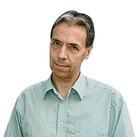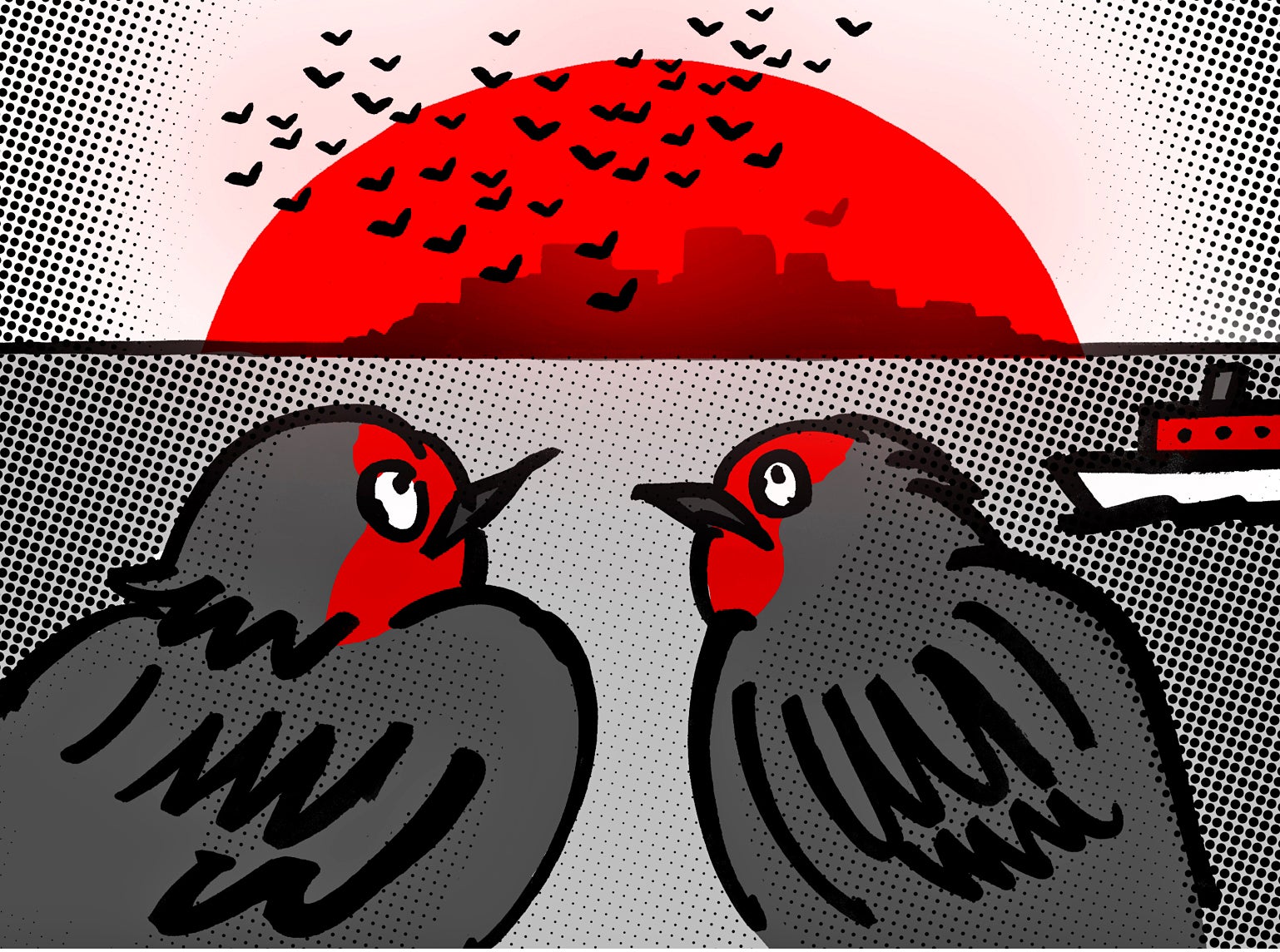War, famine, and drought – the unholy trinity changing our world
In sites of upheaval, the roots of conflict may knit together beyond all disentanglement, yet some things are always clear


Your support helps us to tell the story
From reproductive rights to climate change to Big Tech, The Independent is on the ground when the story is developing. Whether it's investigating the financials of Elon Musk's pro-Trump PAC or producing our latest documentary, 'The A Word', which shines a light on the American women fighting for reproductive rights, we know how important it is to parse out the facts from the messaging.
At such a critical moment in US history, we need reporters on the ground. Your donation allows us to keep sending journalists to speak to both sides of the story.
The Independent is trusted by Americans across the entire political spectrum. And unlike many other quality news outlets, we choose not to lock Americans out of our reporting and analysis with paywalls. We believe quality journalism should be available to everyone, paid for by those who can afford it.
Your support makes all the difference.For the last time: I agree with Nick. Earlier this week, the outgoing Deputy Prime Minister at last backtracked on his government’s part in the withdrawal last year of EU search-and-rescue operations for migrants in the southern Mediterranean. Clegg argued that amid the proposals now aimed at stemming the flow, “It’s all too easy to forget that they are human beings”.
At the core of this mass quest for refuge lies not just a human body – like the 1,200, beyond Titanic’s toll, drowned over the past week alone – but a human mind. That mind registers hardship and peril at home, chooses among options, gathers assets, plans a route, weighs the risks, and sets off on a journey into hope.
In the Mediterranean, we know how that journey has ended for 1,750 people already this year and about 3,300 last. However misguided, each of those shipwrecked (or, arguably, murdered) victims had taken a rational decision to flee conflict, penury or persecution – often enough, all three at once.
Forget the bloodless reckoning of “push factors” against “pull factors”. From Syria to Nigeria, Iraq to Eritrea, every one of those lost souls who chose to entrust their fate to a frail craft on the Libyan shore run by a scheming crook will have acted from a wholly individual blend of hope and fear, aspiration and desperation.
Whichever course HMS Bulwark now plots (the Prime Minister promised the deployment of three naval vessels on Thursday), the people will still try to come. In 2014, 220,000 did make it across the Med to a mostly hostile Europe. The UK, for instance, has refused to match Germany and Sweden in offering some asylum places to Syrian refugees after a UN appeal for Europe to take in 130,000. And among the forces that conspire to uproot these ragged pilgrims lurk movements too profound for any fantasia of SAS strikes on smugglers’ dens to eradicate. From Afghanistan to Nigeria, civil war, state breakdown and ethnic cleansing do wink on political radar screens. Further in the background, hard to isolate but even harder to mitigate, lies long-term climate change.
In yesterday’s Chatham House speech on foreign policy, instantly spun as an assault on David Cameron over post-conflict drift in Libya, Ed Miliband did in fact make the faintest of nods towards the deeper drivers of global turmoil. He said that “what we have seen in Libya is that when tensions over power and resource began to emerge, they simply reinforced deep-seated ideological and ethnic fault lines in the country”.
Those “resource” tensions will shake and scar an increasingly thirsty and crowded planet long after every current political career has closed. In bits and pieces, evidence for the links between political instability, mass migration and environmental crisis has mounted for more than a decade. In March, these once-speculative debates reached some front pages. A US study in the Proceedings of the National Academy of Sciences connected the unprecedented stretch of drought in Syria between 2006 and 2010 to rural depopulation, an upsurge of social and sectarian unrest in fast-expanding cities, and the outbreak of revolt against Bashar al-Assad.
Correlation is not causation. In sites of upheaval, the roots of conflict may knit together beyond all disentanglement. All the same, as the co-author of the Syrian study Richard Seager phrased it: “A drought made worse by climate change was one important factor that initiated the social unravelling.” In Iraq, according to meteorologist Eric Holthaus, the sudden ascent of Isis partnered record seasons of heat. Holthaus quotes Frank Femia of the Washington think-tank the Center for Climate and Security: “You can’t say climate change is causing Isis to do what it’s doing, but it certainly has a role to play in the region.”
In 2009, research found a correlation in sub-Saharan Africa between rising average temperatures and the likelihood of civil strife. To the US Defense Department, climate change ranks as a “threat multiplier”. Hillary Clinton, as Secretary of State, commissioned an intelligence report that foresaw “water wars” breaking out from 2022 as aquifers dried, lakes and rivers parched and rains failed.
In East Africa, a pact last month between Egypt and Ethiopia has for the moment silenced the mutual threats that arose from the latter’s $5bn plan to harvest the Blue Nile via the – already half-built – “Grand Ethiopian Renaissance Dam”. In 2012, Michael Werz of the Center for American Progress studied the role played by environmental stress in migration across north-west Africa. This week, writing for Reuters with Max Hoffman, he reiterated that “climate and demographic trends can squeeze the margins of life at the family and community levels, contribute to decisions to migrate, heighten conflicts over basic resources and threaten state structures and regional stability”.
At the southern end of trans-Saharan routes towards the sea and Europe, Nigeria – now scourged by the insurgency of Boko Haram – annually loses more than 1,350 square miles of land to desertification. Its population will double by 2040. Lake Chad – which sustains 25 million people – has lost 95 per cent of its volume since 1960. “Nobody would argue that climate change is the only factor,” warn Werz and Hoffman. However, “the second-order effects of climate change – undermined agriculture and competition for water and food resources – can contribute to instability and to higher numbers of migrants”.
The hunt for a single overarching cause behind the great shifts in history has a long and questionable pedigree. Neither lead poisoning nor homosexuality caused the downfall of the Roman Empire, as crackpots used to claim. Less fancifully, attendance at a Protestant church did not by itself transform northern Europeans into profit-hungry capitalists. Plausible pictures of seismic change take the form of clusters rather than chains. Yet a scientific weather eye, sharpened by new ways of decoding data, can now spot patterns in what contemporaries saw as discrete disasters.
In his 2013 book Global Crisis, Yale historian Geoffrey Parker looks to the cooling of the “Little Ice Age”, with its sodden summers, ruined harvests and deep-frozen winters, as a partial explanation for the catastrophic wars, famines and rebellions that convulsed the mid-17th century. This chill wind toppled thrones and smashed societies from India to Spain, China to Germany. So did Charles I lose his head in January 1649 because of climate change? Not exclusively, of course. Still, such a perspective may widen the ripples of our understanding.
The problem with such a supersized interpretation is that it may leave us feeling even more helpless than before, paralysed into inertia by the daunting scale of forces now at work. At Durham University, David Held – master of University College and professor of politics and international relations – is a keynote speaker at a conference in June on human migration and the environment. Using the now-popular term for the epoch of man-made environmental change coined by chemist Paul Crutzen, it will ask: “How should we conceive of migration in the Anthropocene?”
However, the advent of the “Anthropocene” alone has not shattered Syria, Iraq and Libya. A harsh critic of the “9/11 wars” and their chaotic aftermaths, Professor Held underlines that the wreckage left by botched Western interventions has done more than enough to leave Libya an anarchic mess where human smugglers flourish. The ousting of Gaddafi without any plan B has left “a catastrophe that has destabilised the region from Mali to Tunisia”, he says.
“The breakdown of the Libyan state has created a pathway and provided an impetus for people to move in increasing numbers,” Professor Held argues. At the same time, leaders in the intended destinations drag their feet and wring their hands. “The EU is at its most fragile for the past 20 years. The 1990s model of Europe as the great soft power, against the hard power of the US, is much diminished.” Whatever combination of warfare, weather and dreams of betterment may drive them, survivors of the passage land in a weakened bloc. It responds to calamity late, or not at all. “Solidarity,” Professor Held notes, “rarely grows under conditions of economic insecurity.” The EU “wants to present a cosmopolitan external face but at the same time, internally, it’s a battleground for major states”.
With those states’ governments in thrall at home to right-wing isolationists, the EU has held out the prospect of a meagre 5,000 places for the most vulnerable refugees from ethnic cleansing and civil war. Too little, too late? It always is. Yet even tokens matter. If you wish to put a human face to the desperate quest for asylum, visit Liverpool Street station in London. There, on “Hope Square”, stand the five bronze children of Frank Meisler and Arie Ovadia’s statue The Arrival. They commemorate that Kindertransport that, from 1938 to 1940, brought 10,000 unaccompanied young refugees (including Meisler himself) out of peril in Hitler’s Europe. As a gesture of humanity in another frightened time, it was not remotely enough, but it was not nothing.
Contemplate these ageless kids – one with a teddy bear, another with a violin – and you see them gaze towards a future that despite all pain and loss feels ripe with possibility. Above all, read the lines from the Talmud inscribed beside the group: “Whosoever rescues a single soul is credited as though they had saved the whole world.”
Join our commenting forum
Join thought-provoking conversations, follow other Independent readers and see their replies
Comments